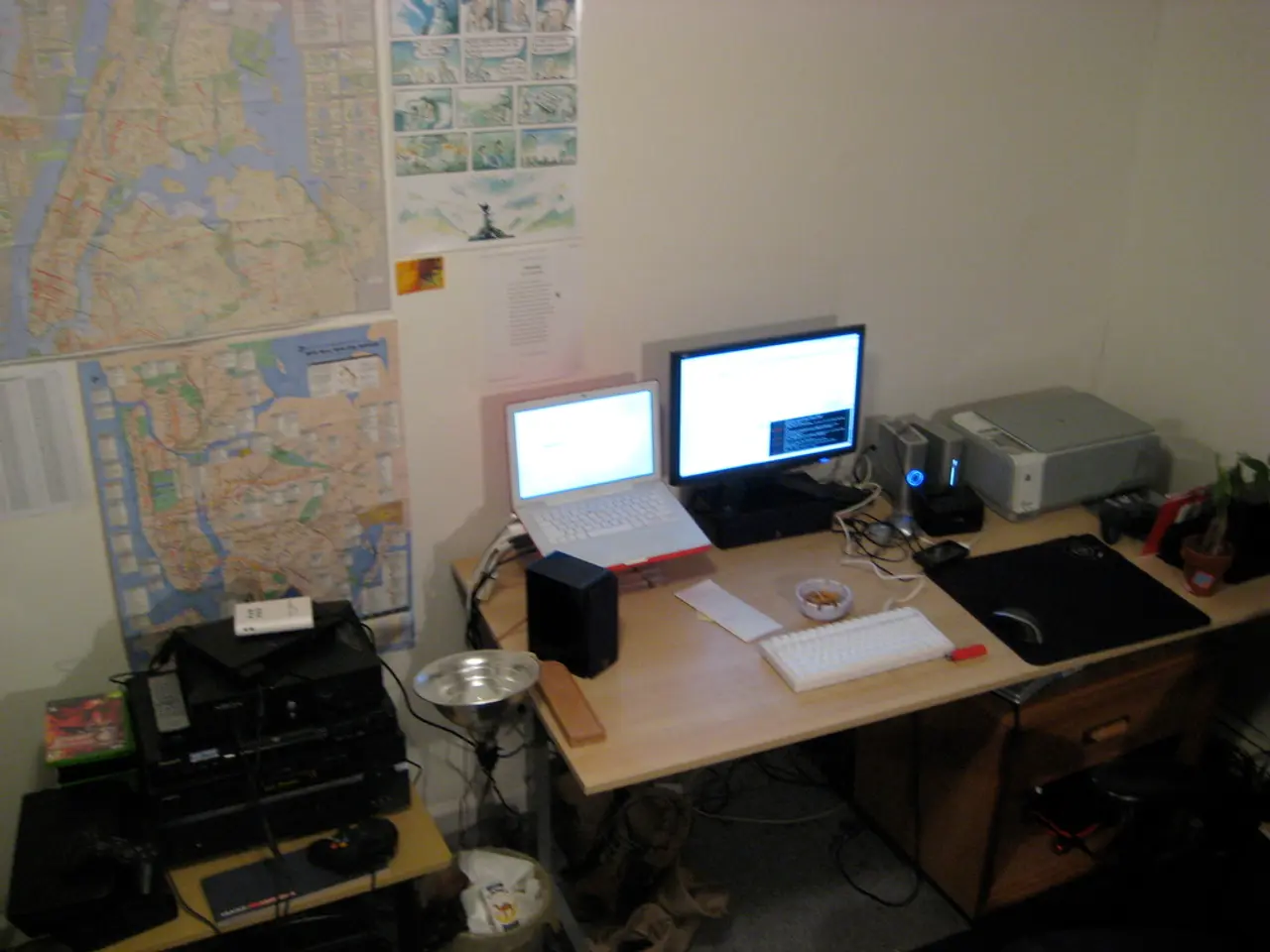Multi-billion dollar electronic and electrical (E&E) manufacturing project targets achieving a trillion ringgit in exports by the year 2030.
The 13th Malaysia Plan was tabled in the Dewan Rakyat today, with Prime Minister Anwar Ibrahim emphasising the importance of sustaining the momentum in Malaysia's semiconductor exports [1]. This focus on the high-value, high-technology semiconductor industry is part of a flagship project, aimed at reaching RM1 trillion in Electrical and Electronics (E&E) exports by 2030 [2].
Malaysia's National Semiconductor Strategy (NSS), launched in 2024, is a comprehensive initiative aimed at transforming the country into a full-fledged design-to-fab semiconductor ecosystem by 2030 [3]. Backed by RM25 billion in fiscal support and targeted incentives, the NSS aims to attract major investments, develop national semiconductor champions, and nurture a skilled workforce in areas such as integrated circuit (IC) design, advanced packaging, and semiconductor manufacturing equipment [2][3][4].
The NSS follows a three-phase plan, emphasising the strengthening of local capabilities, the creation of national semiconductor champions, and the expansion of the ecosystem [2]. The strategy also aims to develop a robust talent pipeline by training 60,000 engineers between 2025 and 2030, with a RM1.2 billion allocation for talent development initiatives [2].
Since its launch, Malaysia has secured over RM63 billion in semiconductor investments, including key projects by companies like Carsem, NXP, Infineon, and Plexus [1][3]. The country's status as the world's sixth-largest semiconductor exporter [4] and a key regional hub in the global semiconductor supply chain [5] is due in part to the operations of companies like Intel Corp, GlobalFoundries Inc, and Infineon Technologies AG in Malaysia [6].
The government's ambitions for the semiconductor industry are not new. Last year, Malaysia's E&E exports surpassed RM600 billion [7]. With the implementation of the flagship project and the ongoing efforts under the NSS, the government aims to leverage these successes to further boost the country's position in the global semiconductor industry.
References:
- Malaysia secures RM63 billion in semiconductor investments
- Malaysia's National Semiconductor Strategy
- Malaysia's National Semiconductor Strategy: A game-changer for the country's tech industry
- Malaysia's semiconductor industry: A strategic choice for growth
- Malaysia's semiconductor industry: A key regional hub
- Multinational companies in Malaysia's semiconductor industry
- Malaysia's E&E exports surpass RM600 billion
- The 13th Malaysia Plan includes an emphasis on sustaining the growth in the semiconductor industry, a flagship project for which is aimed at reaching RM1 trillion in Electrical and Electronics (E&E) exports by 2030.
- Anwar Ibrahim, the prime minister, has launched the Malaysia National Semiconductor Strategy (NSS) in 2024, an initiative worth RM25 billion in fiscal support and targeted incentives, aimed at attracting major investments and nurturing a skilled workforce in the semiconductor industry.
- The NSS focuses on transforming Malaysia into a full-fledged design-to-fab semiconductor ecosystem by 2030, and a three-phase plan is in place, working towards strengthening local capabilities, creating national semiconductor champions, and expanding the ecosystem.
- Most notably, the government has secured over RM63 billion in semiconductor investments from companies like Carsem, NXP, Infineon, and Plexus, contributing to Malaysia's status as the world's sixth-largest semiconductor exporter and a key regional hub in the global semiconductor supply chain.




